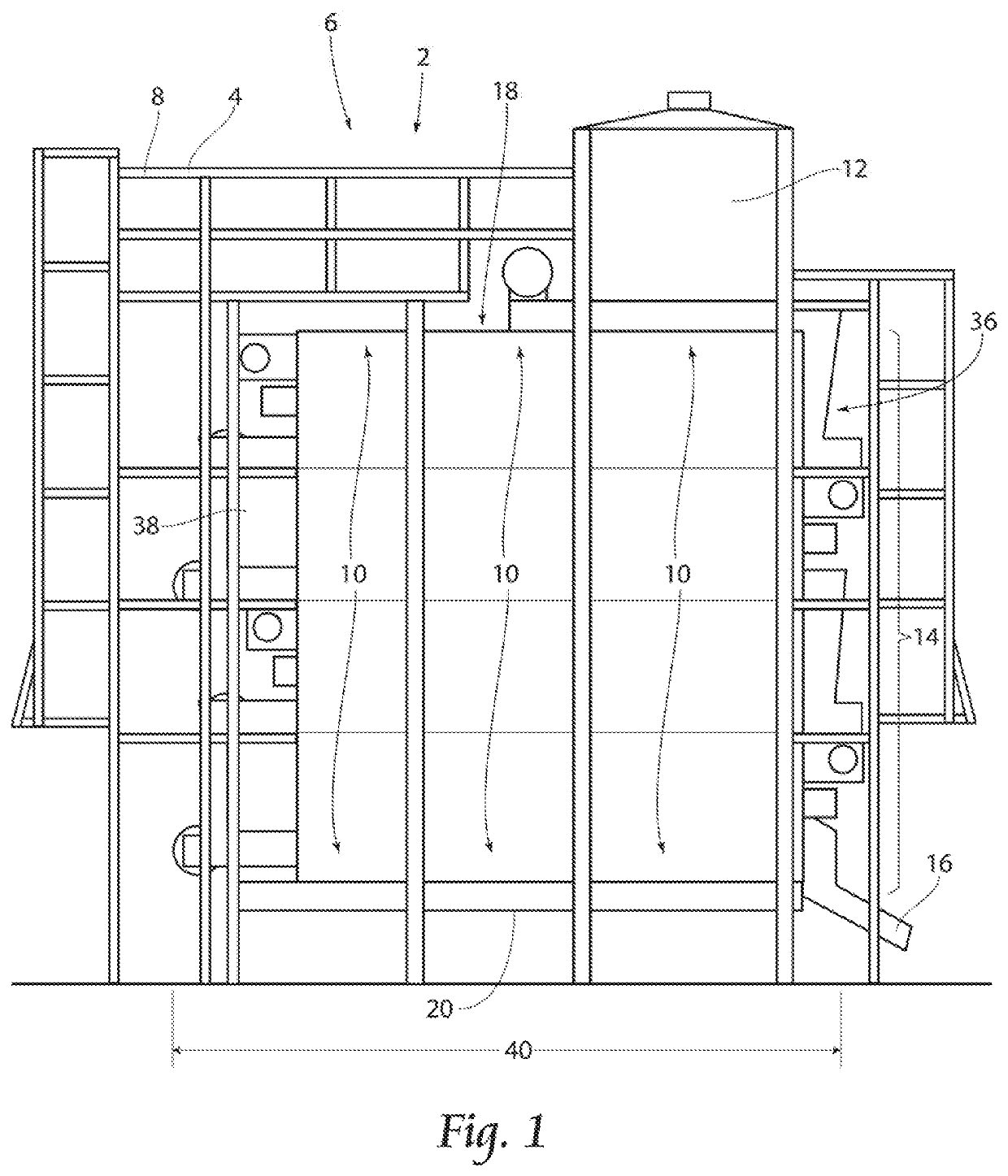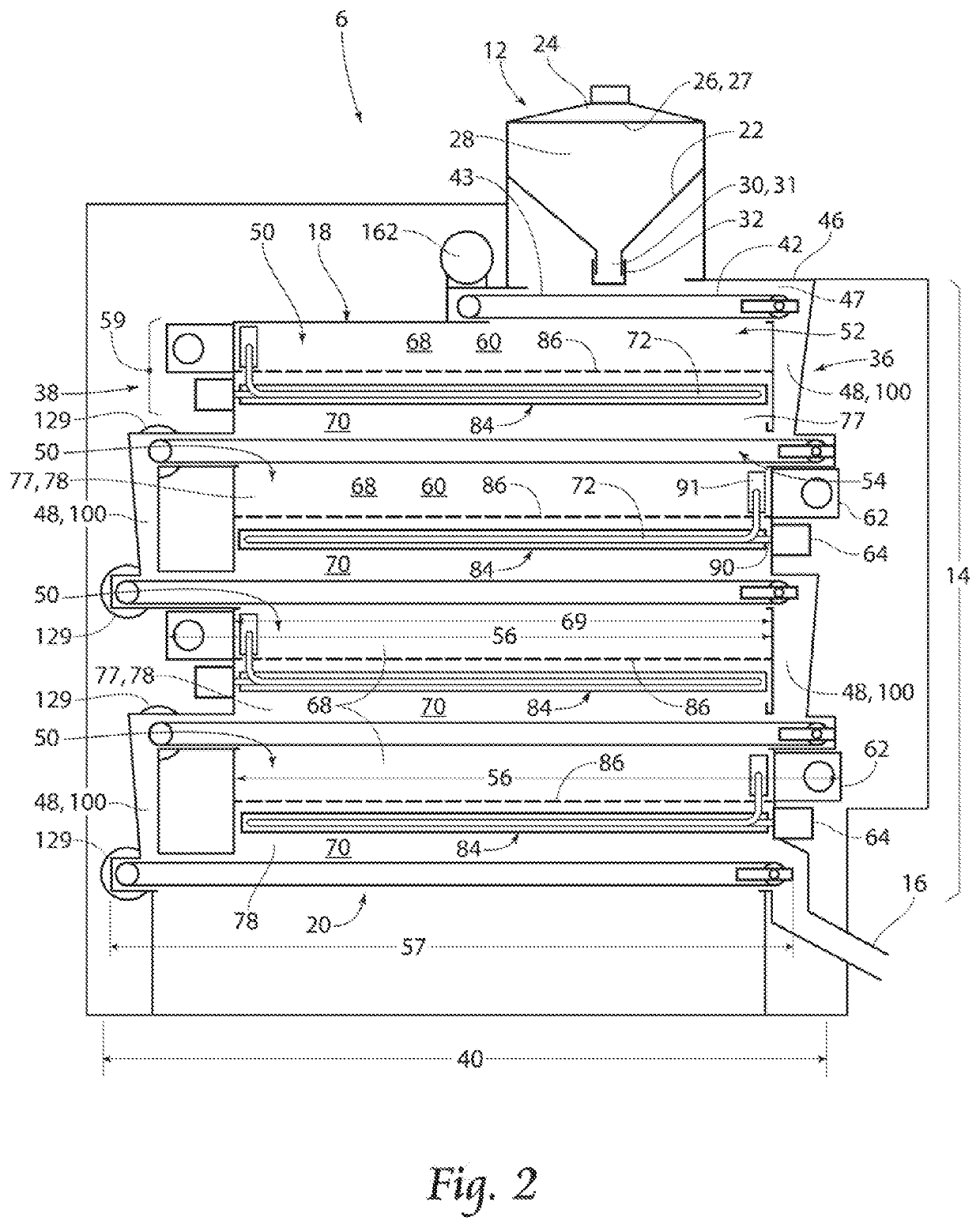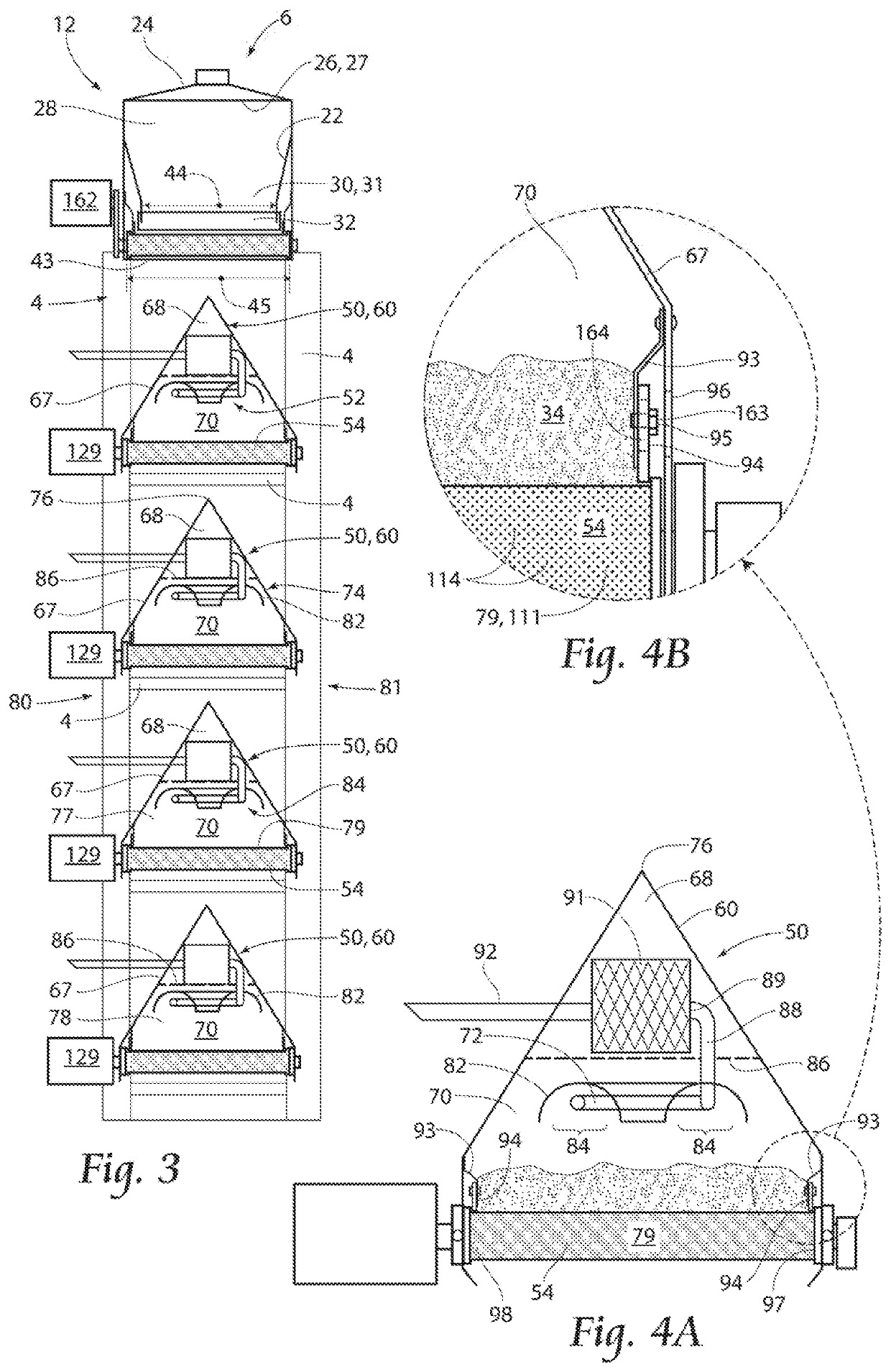Radiant Conveyor Drying System and Method
- Summary
- Abstract
- Description
- Claims
- Application Information
AI Technical Summary
Benefits of technology
Problems solved by technology
Method used
Image
Examples
first embodiment
[0075]As illustrated in FIG. 8A, the radiant conveyor drying system 124 further comprises the following. The PLC 123 retrieves the measurement data from each of the at least one moisture sensor 126, the at least one second temperature sensor 127, and where applicable the at least one first temperature sensor 128. The PLC 125 computes the amount heat required to be produced by each burning unit 64 within the radiant conveyor drying system 6 in order to attain an optimum moisture reading from, the moisture sensor 126 at or in close proximity to the exit assembly 16 for the product 34. The process of measurement, calculation, and adjustment of heat produced by each burning unit 64 continues at a predetermined rate. It is observed the blower fans, conveyor motors 129 and first conveyor motor 162 are preferably maintained at a constant speed.
second embodiment
[0076]As illustrated in FIG. 8B, the radiant conveyor drying system 124′ further comprises the following. The PLC 125 retrieves the measurement data from each of the at least one moisture sensor 126, the at least one second temperature sensor 127, and where applicable the at least one first temperature sensor 128. The PLC 125 computes the amount heat required to be produced by each burning unit 64 within the radiant conveyor drying system 6 and an independent preferred speed of each conveyor motor 129 and the first conveyor motor 162 in order to attain an optimum moisture reading from the moisture sensor 126 at or in close proximity to the exit assembly 16 for the product 34. The process of measurement, calculation, and adjustment of heat produced by each burning unit 64 and speed of each conveyor motor 129 and the first conveyor motor 162 continue at independent predetermined rates. It is observed the blower fans are preferably maintained at a constant speed.
[0077]With attention to...
PUM
 Login to View More
Login to View More Abstract
Description
Claims
Application Information
 Login to View More
Login to View More - R&D
- Intellectual Property
- Life Sciences
- Materials
- Tech Scout
- Unparalleled Data Quality
- Higher Quality Content
- 60% Fewer Hallucinations
Browse by: Latest US Patents, China's latest patents, Technical Efficacy Thesaurus, Application Domain, Technology Topic, Popular Technical Reports.
© 2025 PatSnap. All rights reserved.Legal|Privacy policy|Modern Slavery Act Transparency Statement|Sitemap|About US| Contact US: help@patsnap.com



